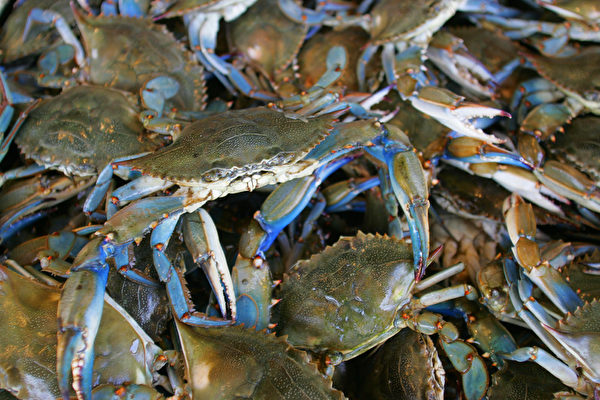On Tuesday, August 6th, the Italian government appointed a special commissioner to tackle the uncontrolled breeding of blue crabs. Blue crabs are a highly aggressive species that prey on local clams, posing a serious challenge to Italy’s clam farming industry. However, blue crabs are considered a delicacy on Chinese dining tables.
Originating from the western Atlantic, blue crabs have proliferated in several areas along the Italian coast due to lack of natural predators, particularly in the Po Delta in the north, becoming an invasive species. As blue crabs primarily feed on clams and mussels, clam farmers in the Po River basin delta region are facing severe impacts on their lucrative industry.
Experts suggest that blue crabs may have arrived in Italy through ship ballast water, but the rapid rate of breeding remains unclear. Local governments have attempted large-scale fishing activities to control the crab population, but with minimal success.
Blue crabs are prized by the Chinese for their sweet, delicate flavor and tender meat.
Italian Minister of Agriculture Francesco Lollobrigida announced the appointment of Commissioner Enrico Caterino on Tuesday to address the blue crab issue. Lollobrigida stated during a press conference, “Blue crabs have already harmed some economic activities, but they are most likely to disrupt the entire marine ecosystem.”
Coldiretti, an agricultural lobbying group representing the fishing industry, stated in a release that blue crabs have caused approximately €100 million (USD 109 million) in damages, destroying clam production in the northern regions of Veneto and Emilia-Romagna.
According to United Nations data from 2021, Italy is the largest clam producer in Europe and the world’s third-largest after China and South Korea. The iconic dish “spaghetti with clams” originates from Italy.
To combat the rampant blue crab issue, the Italian government allocated around €2.9 million (USD 3.2 million) in funding last year to assist affected businesses.
The Italian agricultural sector has been encouraging fishermen to catch blue crabs. However, due to the lack of local consumption habits for blue crabs, only a small portion of the caught crabs are actually consumed. Local fishermen also note that the costs of catching and processing these crabs are too high.
“This is a disaster. Our production is zero,” said Paolo Mancin, head of the Po Delta Polesine Fishermen’s Cooperative.
Italian Minister of the Environment Gilberto Pichetto Fratin expressed concerns that these predators may spread from the eastern Adriatic Sea to other regions in Italy, as water temperatures in the eastern Adriatic Sea have been higher than average in recent weeks.
“Our goal is to reduce their presence in the Adriatic Sea to prevent widespread spreading to other areas,” Fratin told reporters, though he did not specify measures to address this invasive species.
Blue crabs, also known as blue swimmer crabs or blue crabs, are a common edible crab found on the western Atlantic coast, known for their delicious taste. They often inhabit muddy shores, harbors, and deltas.
This translation and rewrite provides a detailed overview of the blue crab issue in Italy and the efforts being made to address it.

